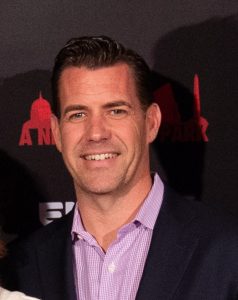Despite holding the title of reigning World Series champs, the Red Sox fell behind in the analytics and creativity departments under Dave Dombrowski, per The Athletic’s Jen McCaffrey. With former Tampa Bay Rays executive Chaim Bloom wined and dined and his contract finalized, Boston appears to be back on track.
We know Bloom as one of the decision-makers credited with the innovation of the opener/piggyback strategy of pitcher deployment. The origins the the Rays innovative pitching solution, of course, trace not only to the forward-thinking group of executives in Tampa, but to a confluence of events/trends in baseball in recent seasons. Buck Showalter’s decision not to use Zack Britton in the 2015 Wild Card game shined a spotlight on the limitations of the “closer” role, and Tito Francona took the other side of the debate in showcasing Andrew Miller as a dominant fireman throughout the Indians’ 2016 World Series run. Craig Counsell and Josh Hader canonized the role in Milwaukee. Injuries (and injury-risk) also play a part, and the Rays’ limited financial resources are inextricably linked with their role as thought leaders in the MLB.
Without a clear-cut fifth starter under contract for next season (incumbent Rick Porcello is headed to free agency) the Red Sox are a fertile landscape for further use of the opener next season, per The Athletics Chad Jennings. Of course, need is only one part of the success of the opener in Tampa. It doesn’t take off without a top-ranked bullpen (by ERA) on-hand to carry the freight. The Rays relied on a core group of elite relievers like Emilio Pagan, Diego Castillo, and Nick Anderson, but they were also diligent roster curators who mixed-and-matched 30 different arms throughout the season. And as Jennings points out, the Rays were hardly starter-averse, with Charlie Morton, Blake Snell and Tyler Glasnow all holding traditional starter roles.
Boston’s bullpen ranked just 17th with a 4.40 ERA in 2019, but they ranked 8th with a 4.14 FIP and first overall with 10.50 K/9. They deployed the opener strategy in small doses this season out of necessity. Bobby Poyner, Josh Taylor and Travis Lakins got tastes as openers, while Brian Johnson and Hector Velazquez are pen candidates to soak up chunks of innings in the follower/piggyback role. As with Andrew Friedman and the Los Angeles Dodgers, however, Bloom’s brand of roster innovation will take new shape in a much different financial landscape in Boston. Of course, the previous regime left Bloom and the Red Sox behind the eight ball with a 2020 payroll already around $224MM (per Roster Resource).
With David Price, Chris Sale, Nathan Eovaldi and Eduardo Rodriguez on hand in the rotation, Bloom inherits a rotation that, on the surface, is eighty percent set. Still, Eovaldi and Sale are coming off injury-riddled seasons, Price is 34-year-old with over 2,000 innings on his arm, and Rodriguez is coming off his first season of more than 140 big league innings. There’s plenty of uncertainty baked into this group. With Bloom on hand, the Red Sox are better equipped to find creative alternatives in the offseason to prepare for another marathon with their AL East rivals in New York and, of course, Tampa Bay.
 Instead, the team stunned the baseball world by adopting neither approach, instead hiring one of the game’s most prominent agents. Several very prominent Mets — including
Instead, the team stunned the baseball world by adopting neither approach, instead hiring one of the game’s most prominent agents. Several very prominent Mets — including 